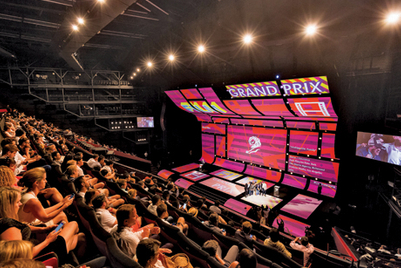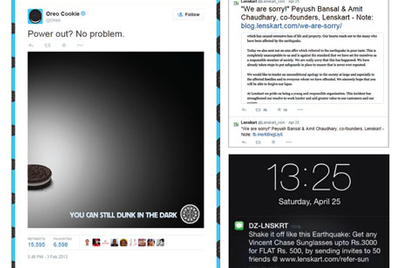
ABP Group’s Businessworld, the weekly business magazine, is now a fortnightly. Along with the change in periodicity, the magazine dons a new look and the content too has been revamped. Talking about the changes, Anita Mazumdar, national advertising director, Business Media (publishers of BusinessWorld and Fortune India) says, “We are retaining and building on enough of our core values, so that we don’t lose our loyal readers and are adding new sections in keeping with the needs of the new age business reader.”
When questioned whether publications are merely going for cosmetic changes during such revamps, Habeeb Nizamuddin, chief growth officer, Lodestar UM, explains, “I am sure publications will put in a lot of efforts before they make any such changes. It’s their business and they would have valid reasons. It all goes back to what the publisher is trying to achieve. In some cases, especially in the print scenario, people who have had a long loyal list of readers but don’t seem to be attracting newer profile of readers go in for a revamp. In some cases, their existing reader base might also be losing relevance. So, when publishers want to get in a larger component of the audience, that starts impacting the content and the attitude of the magazine.”
Commenting on how advertisers receive such revamps, Business Media’s Mazumdar notes, “The first thing that a media buyer or an advertiser sees is the physical product which has to necessarily be contemporary, attractive, well designed, well printed, with substantial content laid out in clearly focussed sections. While the physical changes impact the advertising decisions greatly, change in the content is also a major factor.”
Debraj Tripathy, managing director, MediaCom India, points out that most advertisers wait for results to appear before they start increasing spends. “As a genre, most of the general feature magazines are losing out relevance with their audience with the availability of information through mediums like internet. To be able to keep up with what consumers want to read or see, some publications are changing. Having said that, there are some advertisers who are willing to experiment and start advertising along with the revamp,” he adds.
Pravin Kulkarni, general manager (marketing), Parle Products, shares a similar point of view and notes that his brands would prefer a wait and watch approach and increase spends only after readership numbers reflect the changes.
Revamp of print publications is also done keeping in mind increasing digital consumption trends. At times, it is to bring attention to the digital platform even, contend some. Others argue that the platform is not as important as the message.
Varghese Chandy, chief general manager - marketing, adverting sales, Malayala Manorama, says, “In the digital era, where information is being consumed through television and other sources 24x7, there is definitely a need to keep changing the way you present facts. Therefore, it is essential that consistent changes are done to the product. One has to look beyond the platform as message is the most important thing. Different platforms could be used for delivery. It could be the laptop, tablets or mobile. You adapt to the needs.”

Publishing House
Varghese Chandy, chief general manager - marketing, advertising sales, Malayala Manorama
“In the digital era, where information is being consumed through television and other sources 24x7, there is definitely a need to keep changing the way you present facts. Therefore, it is essential that consistent changes are done to the product.”

Advertiser
Pravin Kulkarni, general manager (marketing), Parle Products
“We do not usually increase spends when the publication is undergoing a revamp. We wait for the results to reflect, and then allot spends accordingly. However, at times when daily papers like Hindustan Times undergo a revamp, we are reasonably sure of the initial impact and so we might experiment during that time.”

Publishing House
Anita Mazumdar, national advertising director, Business Media
“Change allows the advertiser to be engaged in a different discussion which greatly benefits the sales team. Initially it is the physical product, while later the advertiser or media buyer will consider readership patterns, response and feedback to consider spending with the publication brand. Having said that, rates will always play an important role in selecting media since media industry today is fronted by media buyers rather than account planners or media planners.”

Media Agency
Debraj Tripathy, managing director, MediaCom India
“Over the years, I haven’t seen any drastic change among publications in India where audience profiles would have completely changed. Content would have been updated to be in sync with what those readers want rather than address new profiles of readers.”
.jpg&%3bc=0)
Media Agency
Habeeb Nizamuddin, chief growth officer, Lodestar UM
“Today, for most brands, if you look at the audience that they are speaking to vis-a-vis the audience a lot of publications are actually addressing, there is a gap. Reading print publications among newer generation audiences has taken a back seat. Whether we like it or not, that is the reality. A lot of reading is happening in the digital space and not in the physical form. However, the publication business model is still primarily driven by the physical form. So, a lot of publications are looking at revamps in a way to bring interest into the digital form and also hoping it will serve as a launch pad in the digital space.”


.jpg&h=334&w=500&q=100&v=20250320&c=1)
.jpg&h=334&w=500&q=100&v=20250320&c=1)
.jpg&h=334&w=500&q=100&v=20250320&c=1)




.jpg&h=334&w=500&q=100&v=20250320&c=1)



.jpg&h=268&w=401&q=100&v=20250320&c=1)



.jpg&h=268&w=401&q=100&v=20250320&c=1)


